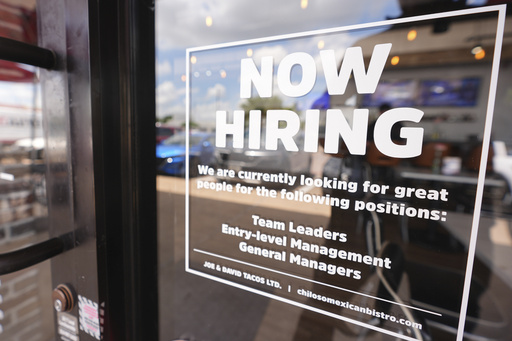WASHINGTON — In a surprising turn, the U.S. economy grew at a 3% annual rate from April through June, recovering temporarily from a decline in the first quarter attributed to ongoing trade tensions initiated by President Donald Trump. However, the underlying figures of this report suggest that uncertainty from Trump’s economic reforms, particularly imposing significant tariffs on global imports, is causing hesitation among U.S. consumers and businesses.
Kathy Bostjancic, the chief economist at Nationwide, remarked that the headline statistics conceal the real performance of the economy, which is decelerating due to the negative impact of tariffs on business activities.
The Commerce Department reported that the American GDP, indicating the country’s total output of goods and services, experienced a revival after contracting by 0.5% from January to March. This first-quarter drop, marking the first economic retreat in three years, was largely due to a spike in imports, as companies rushed to acquire foreign goods prior to the imposing of tariffs by Trump.
While the rebound was anticipated, its magnitude exceeded expectations, with economists predicting only a 2% growth for the second quarter. The notable decline in imports, the largest since the start of the COVID-19 pandemic, contributed over five percentage points to economic growth. Although consumer spending showed modest growth during this period, improving to 1.4% from the previous quarter’s 0.5%, overall domestic expenditure remained tepid.
Private investment significantly dropped, plummeting at a 15.6% annual rate, marking the steepest decrease since the pandemic severely impacted the economy. As businesses reduced the inventories they accumulated in the first quarter, this factor detracted 3.2 percentage points from the growth in the second quarter.
A metric within the GDP that assesses the economy’s core strength saw a slowdown, expanding at a mere 1.2% annual rate compared to 1.9% in the opening months of the year, registering its weakest performance since the end of 2022. This measure encompasses consumer spending and private investment but excludes erratic components like exports, inventories, and government expenditure.
Federal spending and investment continued to decline, falling by 3.7% annually on top of a 4.6% drop earlier this year. Inflationary pressures eased during the second quarter according to Wednesday’s GDP report. The Federal Reserve’s preferred inflation indicator, the personal consumption expenditures (PCE) price index, saw a slower rise at a 2.1% annual rate, down from 3.7% previously. Excluding food and energy, core PCE inflation decreased to 2.5% from 3.5%.
Taking to his Truth Social platform, Trump celebrated the 3% GDP growth and intensified his calls for the Federal Reserve to reduce interest rates, declaring, “2Q GDP JUST OUT: 3%, WAY BETTER THAN EXPECTED! “Too Late” MUST NOW LOWER THE RATE. No Inflation! Let people buy, and refinance, their homes!”
Trump advocates for tariffs as a strategy to bolster American industry, attract manufacturing back to the U.S., and fund substantial tax cuts enacted on July 4. However, mainstream economists, often at odds with Trump’s views, argue that tariffs could harm the economy by increasing costs and reducing efficiency in sheltered U.S. companies. They point out that tariffs are borne by importers in the U.S., who may pass this cost onto customers with higher prices. This can lead to inflation, although its effect so far has been relatively modest.


